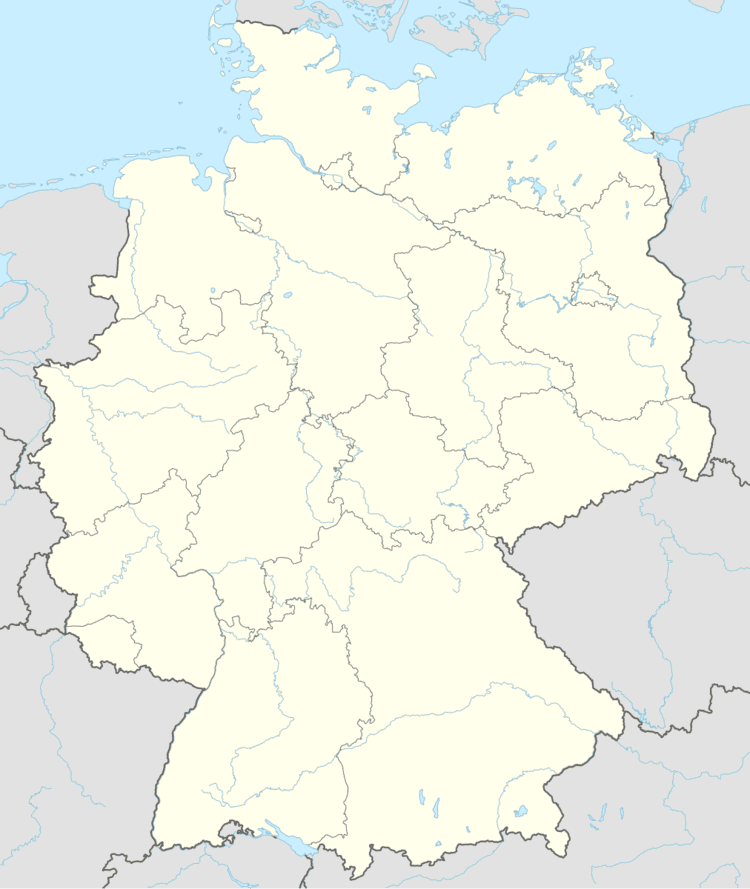Time zone CET/CEST (UTC+1/+2) Area 6.28 km² Population 229 (31 Dec 2008) Dialling code 06755 | Elevation 352 m (1,155 ft) Postal codes 67823 Local time Thursday 11:10 AM Postal code 67823 | |
 | ||
Weather 9°C, Wind NW at 5 km/h, 67% Humidity | ||
Lettweiler is an Ortsgemeinde – a municipality belonging to a Verbandsgemeinde, a kind of collective municipality – in the Bad Kreuznach district in Rhineland-Palatinate, Germany. It belongs to the Verbandsgemeinde of Meisenheim, whose seat is in the like-named town. Lettweiler is a winegrowing village.
Contents
- Map of 67823 Lettweiler Germany
- Location
- Neighbouring municipalities
- Constituent communities
- History
- Neudorferhof
- Municipalitys name
- Population development
- Religion
- Municipal council
- Mayor
- Buildings
- Lettweiler main centre
- Natural monuments
- Winegrowing
- Sport and leisure
- Clubs
- Transport
- References
Map of 67823 Lettweiler, Germany
Location
Lettweiler is a largely preserved linear village (by some definitions, a “thorpe”) lying in the North Palatine Uplands in a mountain hollow, a side dale of the Glan between Obermoschel and Odernheim am Glan. The municipal area measures 627 ha. Lettweiler preserves a rural character even today.
Neighbouring municipalities
Clockwise from the north, Lettweiler’s neighbours are the municipalities of Odernheim am Glan and Duchroth, the town of Obermoschel and the municipalities of Unkenbach and Rehborn. Obermoschel and Unkenbach both lie in the neighbouring Donnersbergkreis, whereas all the others likewise lie within the Bad Kreuznach district.
Constituent communities
Also belonging to Lettweiler are the outlying homesteads of Nachtweiderhof and Neudorferhof. The latter lies some three kilometres as the crow flies from Lettweiler’s main centre and was founded by Mennonites.
History
In 1190, Lettweiler had its first documentary mention under the name Litwilre in a directory of landholds in which a lord, Werner II of Bolanden, stated that he had been enfeoffed with the village by the Archbishop of Mainz. In the centuries that followed, the local lordships changed several times. In 1603, Nassau-Saarbrücken ceded the village to Palatinate-Zweibrücken, with which it remained until the late 18th century. From 1798 to 1814, the time of French Revolutionary and Napoleonic French rule, Lettweiler belonged to the Canton of Obermoschel in the Department of Mont-Tonnerre (or Donnersberg in German). After the Congress of Vienna, Lettweiler passed in 1816 to the Rheinkreis (a newly created exclave in the Palatinate) in the Kingdom of Bavaria, where it remained until the end of the Second World War (although Bavaria had in the meantime ceased to be a kingdom). In the course of administrative restructuring in Rhineland-Palatinate, Lettweiler was transferred in 1969 from the Rockenhausen district (which was itself dissolved) to the Bad Kreuznach district. Ecclesiastically, Lettweiler (pastorate of Odernheim/deaconry of Obermoschel) belongs to the Evangelical Church of the Palatinate and the Roman Catholic Diocese of Speyer.
Neudorferhof
At the Neudorferhof, where today one of the municipality’s two riding stables is to be found, the Romans long ago set up a way station where horses could be changed. In 1686, the Neudorferhof had its first documentary mention. The small settlement here was built by Mennonites, who also built a small church.
Municipality’s name
Over the centuries, the village’s name changed many times (Littwiler, Lirrewilre, Lywilre, Lettwiler, Lytwyler), until sometime in the earlier half of the 20th century, the village finally settled on “Lettweiler”, the name by which it is now known.
Population development
Lettweiler’s population development since Napoleonic times is shown in the table below. The figures for the years from 1871 to 1987 are drawn from census data:
In 1675 – 27 years after the Thirty Years' War had ended – there were only four families living in Lettweiler. In 1770, there were 51 commoners and 5 Hintersassen (roughly, “dependent peasants”). Then the population grew, reaching 502 in 1866. Until the First World War broke out, this figure only changed slightly.
Religion
As at 31 October 2013, there are 216 full-time residents in Lettweiler, and of those, 145 are Evangelical (67.13%), 29 are Catholic (13.426%), 2 (0.926%) belong to other religious groups and 40 (18.519%) either have no religion or will not reveal their religious affiliation.
Municipal council
The council is made up of 6 council members, who were elected by majority vote at the municipal election held on 7 June 2009, and the honorary mayor as chairman.
Mayor
Lettweiler’s mayor is Hans Werner Lamb.
Buildings
The following are listed buildings or sites in Rhineland-Palatinate’s Directory of Cultural Monuments:
Lettweiler (main centre)
Neudorferhof
The 17th-century church was built to replace a 14th-century village chapel after this had fallen into disrepair and had to be torn down.
Natural monuments
Lettweiler has one listed natural monument, the Dicke Eiche (“Fat Oak”; no. ND-7133-424). This stands east of the village in the rural cadastral area known as “Auf der Trift”.
Winegrowing
Lettweiler has a long tradition of winegrowing. The vineyards belong to the Nahe wine region. Even today, there is still one winemaker in the village, the Erwin Lamb winery.
Sport and leisure
Lettweiler has a sporting ground and a multipurpose hall.
Clubs
The following clubs are active in Lettweiler:
Transport
To the southeast runs Bundesstraße 420. Leading through the village itself is Kreisstraße 78, off which branches Kreisstraße 77 in the middle of the village. Serving Staudernheim is a railway station on the Nahe Valley Railway (Bingen–Saarbrücken).
